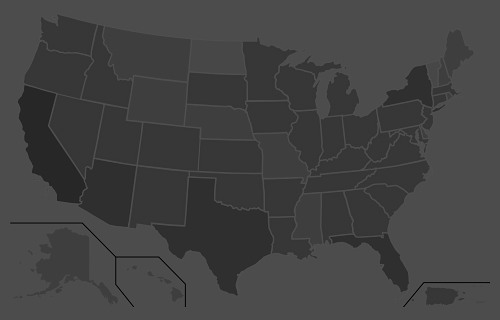“Our added winter moisture and active calling period led to a very long nesting and hatching season, starting in late April and extending into early summer, with chicks hatching as late as early July,” O’Dell said. “From a population standpoint, we are out of a deficit for the first time since 2001-2002. Quail are starting to pop up in places they haven’t been seen in a while.
“If you’ve never had the chance to experience what Arizona quail hunting built its name on, then this would be the year to get out and enjoy it.”
Meanwhile, hunters should note that the season for Mearns’ quail doesn’t begin until Dec. 4. It’s summer rainfall that plays a key role in nesting success and population numbers of this species. After a spotty and relatively weak monsoon across southern Arizona, these birds are likely to be abundant only in pockets that received sufficient precipitation this summer.
A valid Arizona hunting or combination hunt and fish license is required for all hunters 10 and older. Those hunters under 10 must either have a valid hunting or combination hunt and fish license, or be accompanied by an adult who possesses a valid hunting or combination hunt and fish license. Licenses can be purchased online or at license dealers statewide. A youth combination hunt and fish license (ages 10 to 17) is $5.
The general bag limit is 15 quail per day in the aggregate, of which no more than eight may be Mearns’ quail (when the Mearns’ season opens Dec. 4). The general possession limit is 45 quail in the aggregate after opening day, of which no more than 15 Gambel’s, scaled or California quail in the aggregate may be taken in any one day. After the opening of the Mearns’ season, the 45-quail possession limit may include 24 Mearns’ quail, of which no more than eight may be taken in any one day.
More quail-hunting information can be found on the department’s website at https://www.azgfd.com/Hunting/. Another resource for both new and experienced hunters alike is “An Introduction to Hunting Arizona’s Small Game.” Written by Randall D. Babb, the 196-page, full-color book covers where and how to hunt small game birds (like quail), squirrels, rabbits, ducks and geese. It also includes how to prepare and cook your harvest, with illustrations and recipes. The book can be ordered for $16.95 at www.azgfd.gov/publications.
Finally, hunters should check out O’Dell’s techniques for field-dressing quail at https://www.youtube.com/watch?v=3gRwZAcWzzk.
####
Publishers Notes: OUT OF STATE HUNTERS, FISHERMEN & OUTDOOR ENTHUSIASTS; Due to the Covid 19 pandemic, there could be limitations for OUT of STATE hunters, fishermen and other outdoor enthusiasts to include a 14-day quarantine requirement or negative COVID-19 testing alternative. Please check with the State's Department of Natural Resources BEFORE you travel or apply for the 2020 Fall Hunts.
The Palomar Knot
This knot is good for all kinds of light fishing lines (especially braid which will not pull out of this knot) and retains much of the original line strength.
Over 95 percent in strength, the Palomar knot is good for lines up to and over 20-pound test. Because it's double-run through the lure or hook eye, knotted, and then looped over the hook or lure, it may tangle easier. But it's still a favorite knot of many anglers.
The Backcountry Press
There are a large variety of knots for the outdoors including hunting, fishing or boating and each knot has specific properties and suitability for a range of tasks. Some knots are well-adapted to attach to particular objects such as another rope, cleat, ring, or stake. Other knots are made to bind or constrict around an object. Choosing the correct knot for the job at hand is one of the most fundamental aspects of using knots well. (Some Video Instructions are Included)
© 2020 TBC Press - All Rights Reserved Website Design by:
K N O T S
OVERVIEW
Uses: The Palomar Knot is a simple knot for attaching a line to a hook, or a fly to a leader or tippet. It is regarded as one of the strongest and most reliable fishing knots.
Tying it: After the loop is passed through the eye, an overhand knot is tied with the loop. The loop is then passed over the hook and tightened around the bight below the eye. The effect is that this leaves the hook free to rotate in the knot.
Alternative: Some descriptions show the final loop positioned against the shaft of the hook rather than pulled further down around the bight. This limits the hook's movement and the majority of experienced fishermen recommend the technique illustrated here.
Advantages: It is recommended for use with braided lines. With a little practice the Palomar is a knot that can be tied in the dark.
Disadvantages: When tying this knot, the fly or hook has to pass through the loop, which can be awkward and necessitates making the loop large enough.
4 Easy Steps for Tying the Palomar Knot:
- 1. Double about 6 inches of line and pass through the eye of the hook
- 2. Tie a simple overhand knot in the doubled line, letting the hook hang loose. Avoid twisting the lines.
- 3. Pull the end of the loop down, passing it completely over the hook.
- 4. Moisten and pull both ends of the line to draw up the knot. Trim excess.









